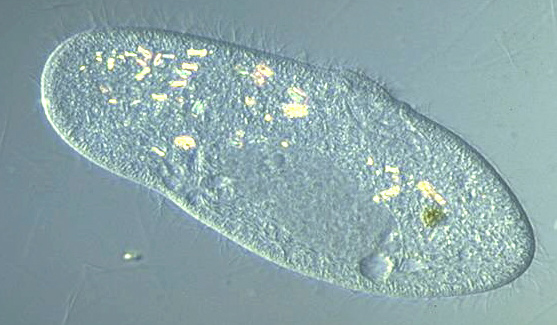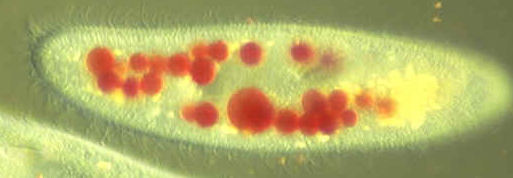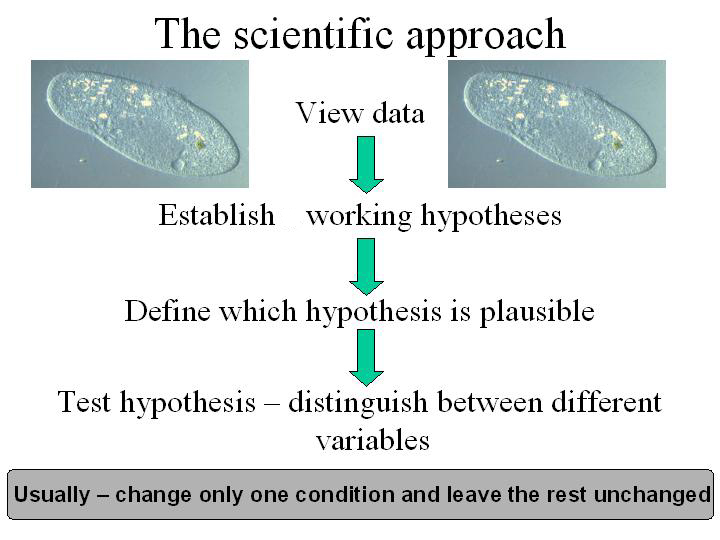|
|
 |
|
|
 |
|
2. pH homeostasis in organelles. 3. SDS-PAGE & western blot. |
|
|
This virtual lab is designed to allow you to experience the scientific way of thinking by studying mechanisms underlying the digestion process performed by Paramecium. The process you are about to explore takes place in paramecium, BUT we have simplified it. In real life, the mechanisms underlying the events discussed below are far more complicated.
|
Please use the Morfix on-line dictionary. |
| In order to begin to understand
such complex processes we need to choose a simple model system.
The protist Paramecium caudatum (to the right), a unicellular eukaryotic organism, provides us with such a model. It is easy to grow in large numbers and has been studied extensively for over 200 years. Due to its relatively large size, it can be studied easily using light microscopy. |
 |
| The process of intracellular digestion has been previously described in this organism. We will use this well characterized process to analyze the subcellular events taking place in the food vacuole (stained here in red). |  |
Introduction
Part B: How do scientists conduct
their research?


This is exactly what YOU will
be doing in this tutorial.
During each step of the tutorial you will be provided
with multiple-choice questions. The different answers will lead you to
additional comments and explanations.
Wrong answers can lead you to
valuable comments and insights,
so don’t rush through the tutorial.
 |
|
.